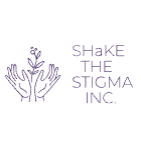Obsessive Compulsive Disorder (OCD) is a disorder where people have thoughts that cannot be controlled, otherwise known as obsessions and/or repeated behaviors, otherwise known as compulsions. According to National Institute of Mental Health (NIMH), obsessions are urges or mental pictures that can cause anxious thoughts. Examples of these obsessions can include belligerent thoughts towards others or yourself, prohibited thoughts regarding religion, harm, or sex, a fright of contamination, and making sure that things are symmetrical. Compulsions are generally perceived as responses to an obsessive thought. Examples of these compulsions can include counting (compulsively), arranging things in a specific way, checking on things (repeatedly), and continuous handwashing and cleaning (NIMH » Obsessive-Compulsive Disorder (nih.gov))
OCD can contain various forms, but most fall into one of the four generalized categories. According to WebMD, these categories are checking, symmetry and ordering, contamination, and ruminations and intrusive thoughts.
Treatment for OCD can include psychotherapy, or cognitive behavioral therapy (CBT) used to transform thinking patterns, relaxation, and medication (OCD: Types, Symptoms, Causes, Diagnosis, Treatment, and Related Conditions (webmd.com))
To learn more about OCD diagnosis, treatments, and who you should talk to please visit: Obsessive Compulsive Disorder (OCD): Symptoms & Treatment (clevelandclinic.org)
